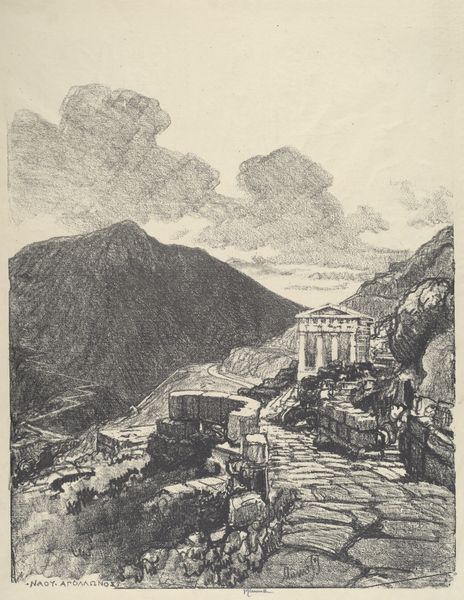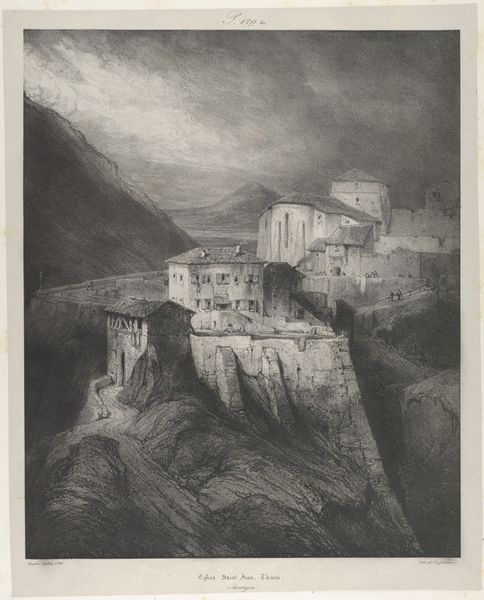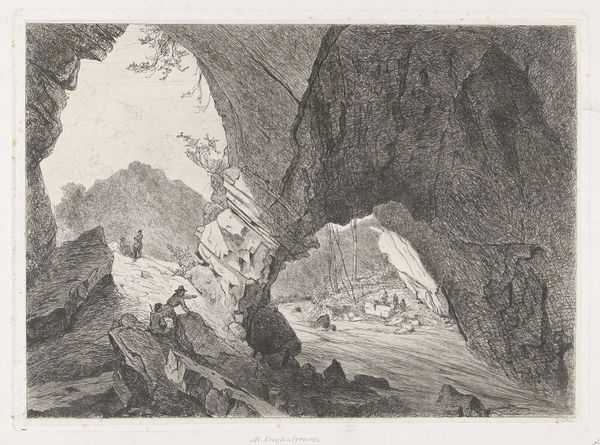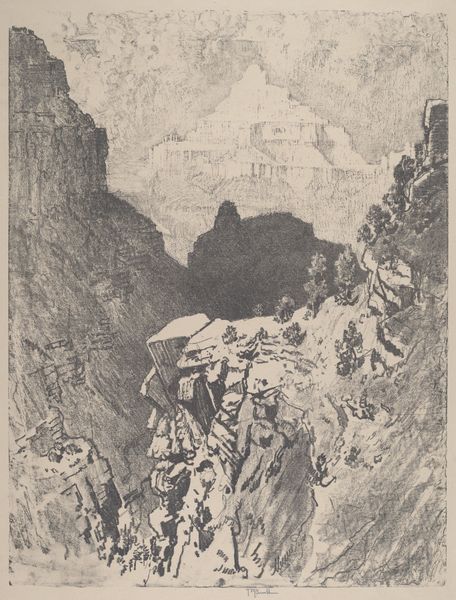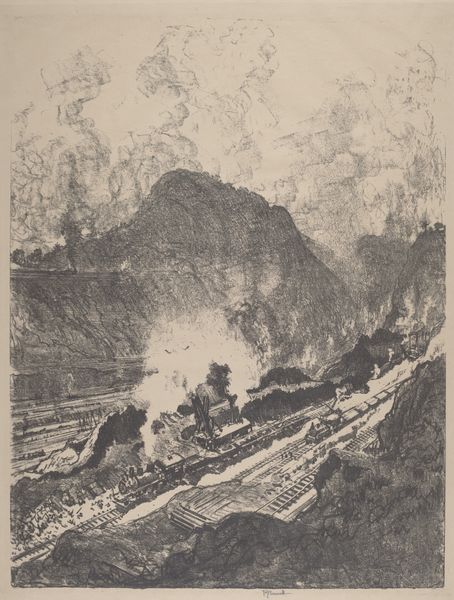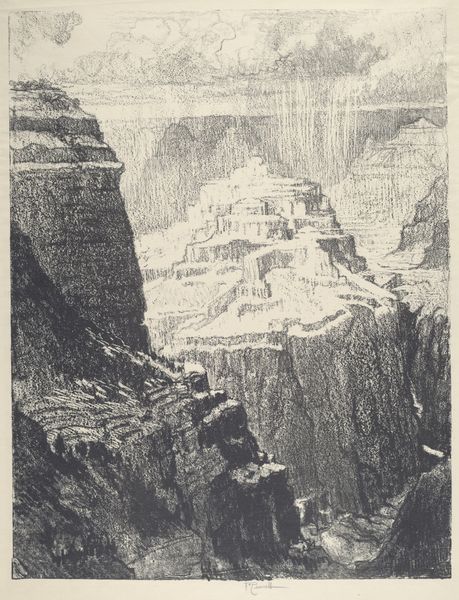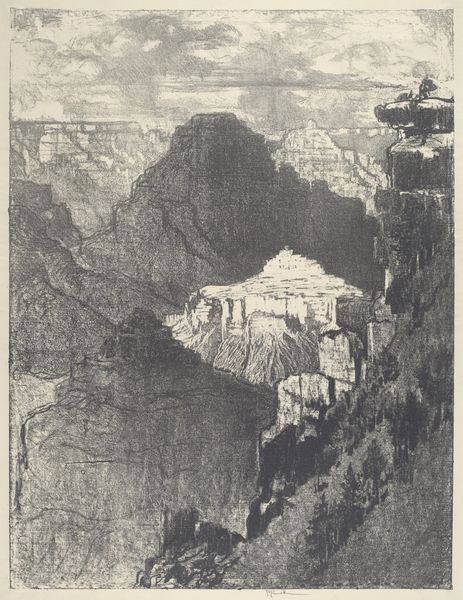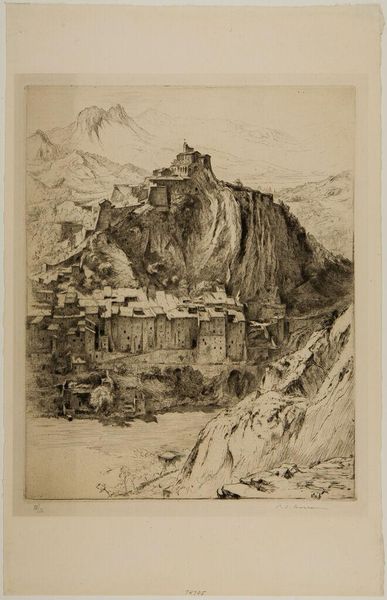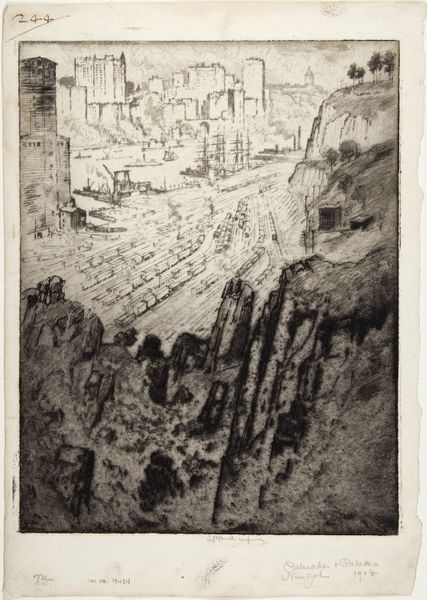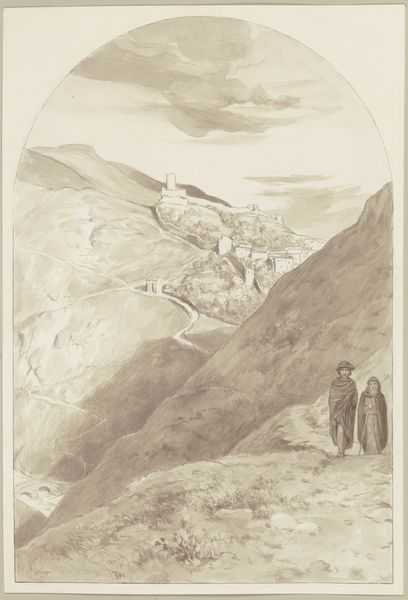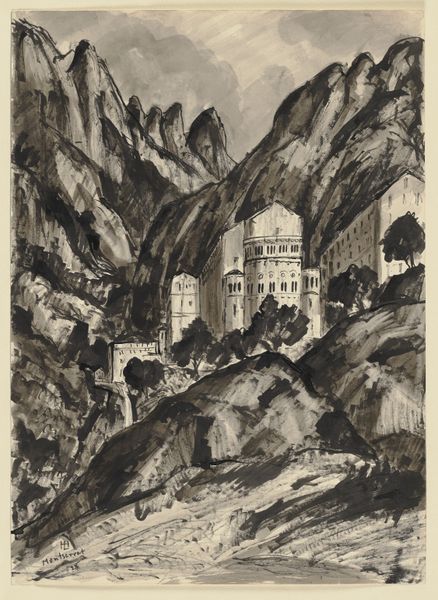
print, etching
# print
#
etching
#
landscape
#
geometric
Copyright: National Gallery of Art: CC0 1.0
Curator: Welcome. Today we’re examining “Seats of the Mighty, Delphi,” an etching by Joseph Pennell created in 1913. Editor: What strikes me immediately is the stark contrast—the imposing mountains looming over the fragmented geometry of the ancient ruins. There’s a palpable sense of history and decay. Curator: Indeed. Pennell's choice of etching, a printmaking process involving acid-etched lines on a metal plate, underscores the very material presence of the past. It's not just a scene; it's about the laborious process of capturing a place and a time using specific materials. We also should reflect on how sites such as Delphi became sites for cultural tourism that changed the nature of the work, while providing it a source of support, but changing the labor practices that came along with creating it. Editor: Agreed. Looking closely, Pennell employs varied line weights and densities to render both the monumental scale of the mountains and the delicate textures of the stonework. The dark, almost chaotic hatching of the peaks contrasts with the ordered arrangement of the architectural remains, highlighting the enduring tension between nature and human creation. I am reminded of structuralist readings of similar oppositions within myth. Curator: Right. But the etching medium is not without its socio-economic implications, because creating such work for audiences allowed artists to access more audiences that they did not otherwise engage, spreading certain propaganda, opinions, and the very act of artistic creation itself. It reflects the rising role of cultural institutions in the early 20th century. Consider that mass media also allowed these images to come across the oceans and create lasting visual impacts regardless of travel and leisure. Editor: A compelling point. However, the artist's choices are equally informative. Pennell isn’t just documenting Delphi; he is constructing a narrative of its historical weight and visual drama. The composition guides our gaze—a formal act that transforms these scattered blocks into an organized vision of past glory. Curator: Absolutely. And while the focus is definitely aesthetic appeal to the consumers, and on visual elements and dramatic flair in capturing Delphi, Pennell reminds us to examine the conditions of representation, labor practices and audience consumption around the very activity. Editor: A stimulating reminder to balance aesthetic observation with a keen awareness of historical contexts. Thank you. Curator: Thank you. Thinking about the material aspect brings added richness and multiple meanings to these geometric architectural designs and natural mountainous environments, making us better critics of landscape art as well.
Comments
No comments
Be the first to comment and join the conversation on the ultimate creative platform.
